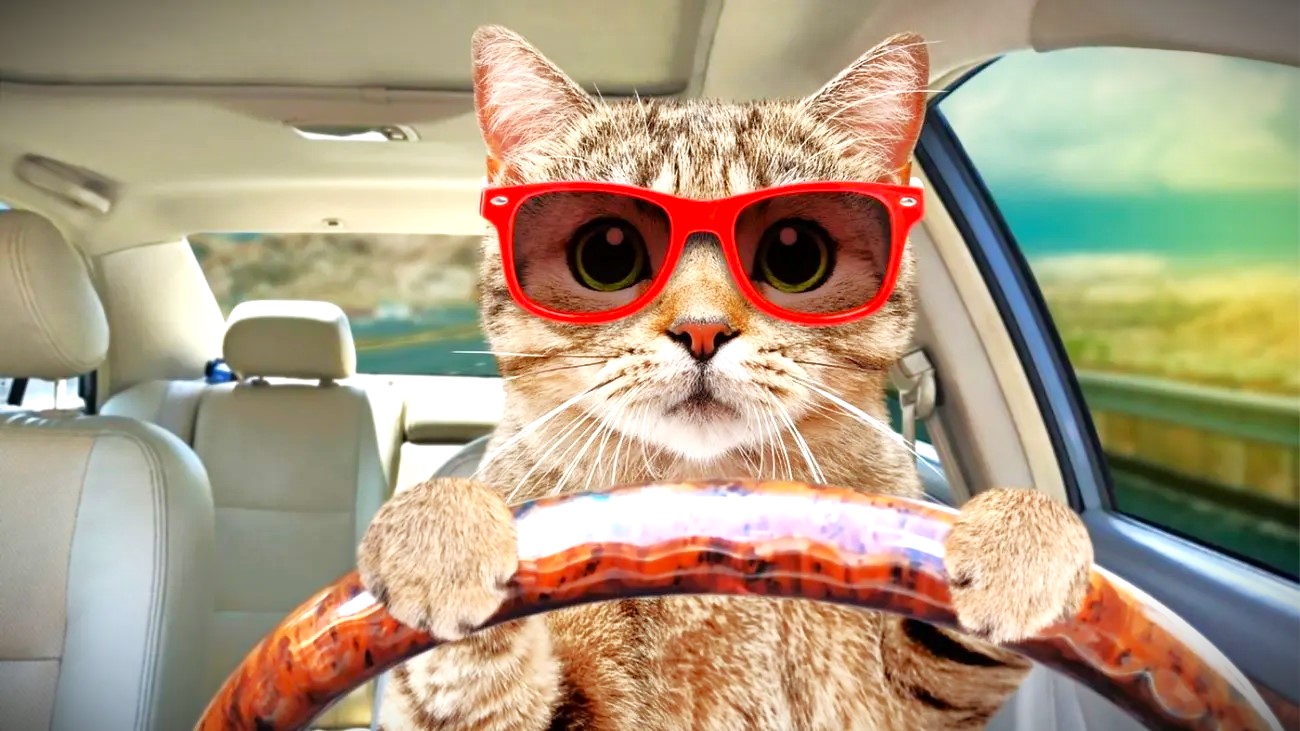The majority of cats detest car rides, it’s no secret. Most cats never drive more than a few times in their lifetimes. Frequently, car rides are only for the veterinarian, which gives the cat a bad opinion of the vehicle. Furthermore, since cats are not usually taken on car rides, they might never get acclimated to the sensation.
If your cat finds short trips stressful, long trips will most likely cause them even more stress. You might feel overly anxious and overwhelmed if you are taking your cat on a lengthy car ride, particularly if you are aware that your cat becomes anxious when driving. Even though you might never be able to make your cat enjoy going on car rides, you might be able to help him become less stressed out by helping him get used to them.

How to Help Your Cat Acclimate to Driving
Your cat probably equates car trips with trips to the veterinarian. This association can make car rides very unpleasant for everyone, as most cats get very stressed out when they go to the vet. This should not deter you from getting your cat checked out by a veterinarian on an annual or biannual basis. Rather, begin rehearsing the car routine until your cat begins to unwind. Over time, this procedure can lessen the anxiety that comes with road trips.
To let your cat explore, start by leaving your cat carrier outside with the door open. Place a cozy blanket or bed inside, along with a cherished toy and/or some extra delectable goodies. Let your cat get used to being inside; don’t shut him in just yet. When he reaches the point where he will stay in the carrier for a few minutes, offer him more treats. If your cat is anxious about the carrier, you might want to use a feline pheromone spray such as Feliway inside the cat carrier to help calm them down. But avoid dousing your cat in pheromones straight. If your cat is a fan of catnip, you may also try adding some to the carrier.
Next, pretend that you are going to take a car ride as you practice putting your cat in the carrier. Take up the carrier and carry it around. After that, let your cat outside and give them some nice treats. Extend the duration of your strolls while your feline is inside the carrier. Try taking the cat carrier outside to the car once it begins to unwind, but stay put. Give them another expensive treat as a reward.
Add little trips to nowhere after that. After giving your cat a ride around the house, return home and release him from his carrier. Again, provide an abundance of delicious treats.
Increase the duration of your car rides gradually without overusing your cat. If your cat is panting or making loud vocalizations, the journeys have gotten too lengthy too soon. See if your cat adjusts by going slowly through the process.
Getting Ready for a Long Travel
Get your cat ready ahead of time if you intend to go on a longer excursion, say several hours or longer.
Make sure you gather a few things before the trip. Ensure that your cat is wearing an identifying collar or harness with an easy release system on it. In the event that your cat gets lost or loose and the collar or harness comes off, having a microchip is also crucial. In case your cat becomes sick while traveling, compile a list of emergency veterinarians.
Place your cat in a small room with the carrier, food, water, and a litter box the night before you depart. The next day, it will be simpler to get your cat into the carrier thanks to this. It can also aid in your cat’s transition to a smaller space.
Your cat will require a break if the trip lasts longer than two or three hours. On the trip, remember to pack food, water, and a litter pan. Every two to three hours, give your cat a break so they can unwind, eat, drink, and use the litter box.
How to Handle Your Cat Who Refuses to Acclimate to the Car
No matter how hard you try, some cats will never be able to settle down for a car ride. Medication and/or calming supplements may be beneficial for these cats. Consult your veterinarian about the best choices for your feline.
Solliquin is one nutritional supplement that can help your cat relax without the need for prescription drugs. Before you go on a long trip, try this out beforehand.
It may be time to try a stronger medication if supplements prove to be ineffective. For the most nervous cats, sedation might be the best course of action.
When You Reach Your Objective
Your cat needs time to get used to his new surroundings, whether you are taking him on a vacation or moving to a new house. Your cat should be gradually acclimated to his new area until he feels at ease. This may take some time, so be patient.




